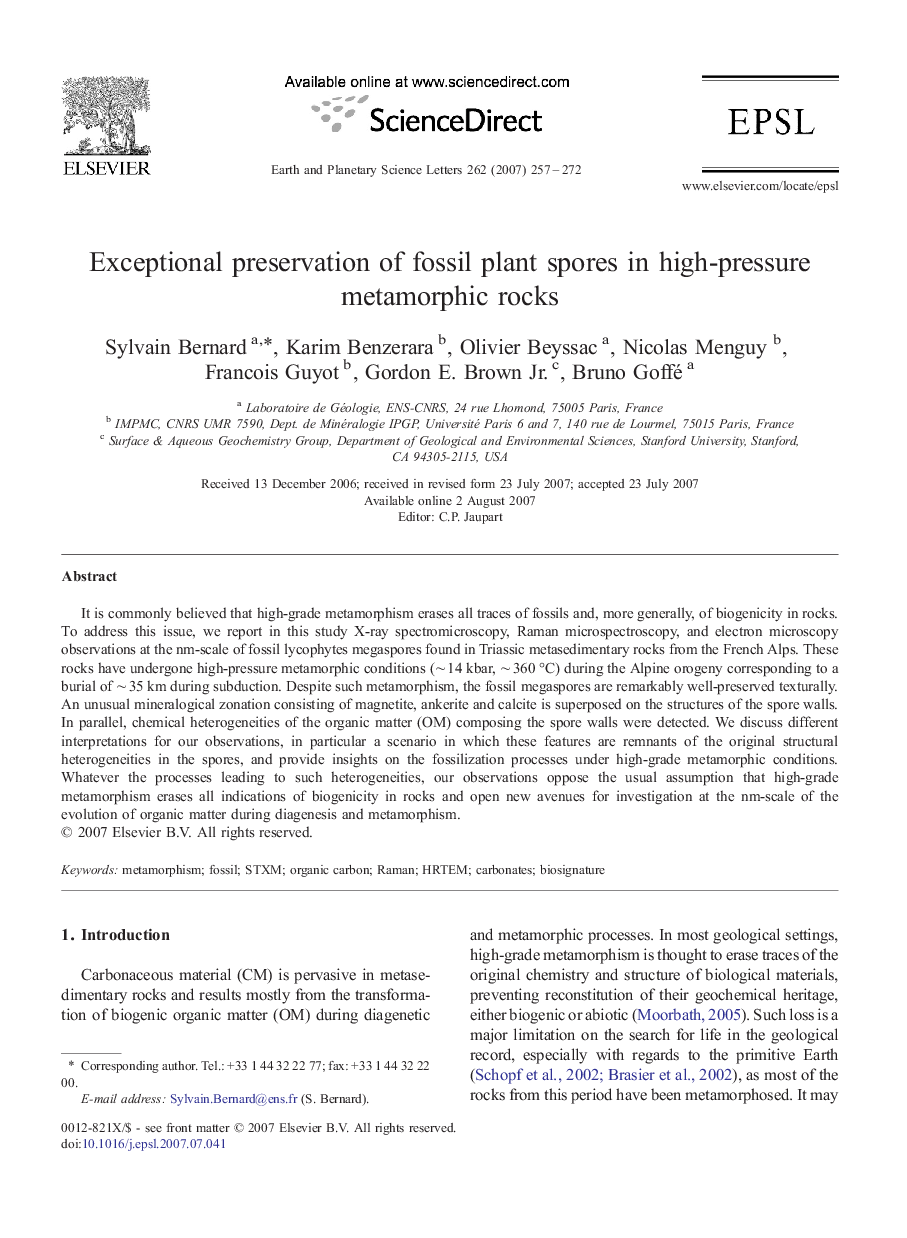| Article ID | Journal | Published Year | Pages | File Type |
|---|---|---|---|---|
| 4680152 | Earth and Planetary Science Letters | 2007 | 16 Pages |
It is commonly believed that high-grade metamorphism erases all traces of fossils and, more generally, of biogenicity in rocks. To address this issue, we report in this study X-ray spectromicroscopy, Raman microspectroscopy, and electron microscopy observations at the nm-scale of fossil lycophytes megaspores found in Triassic metasedimentary rocks from the French Alps. These rocks have undergone high-pressure metamorphic conditions (∼ 14 kbar, ∼ 360 °C) during the Alpine orogeny corresponding to a burial of ∼ 35 km during subduction. Despite such metamorphism, the fossil megaspores are remarkably well-preserved texturally. An unusual mineralogical zonation consisting of magnetite, ankerite and calcite is superposed on the structures of the spore walls. In parallel, chemical heterogeneities of the organic matter (OM) composing the spore walls were detected. We discuss different interpretations for our observations, in particular a scenario in which these features are remnants of the original structural heterogeneities in the spores, and provide insights on the fossilization processes under high-grade metamorphic conditions. Whatever the processes leading to such heterogeneities, our observations oppose the usual assumption that high-grade metamorphism erases all indications of biogenicity in rocks and open new avenues for investigation at the nm-scale of the evolution of organic matter during diagenesis and metamorphism.
